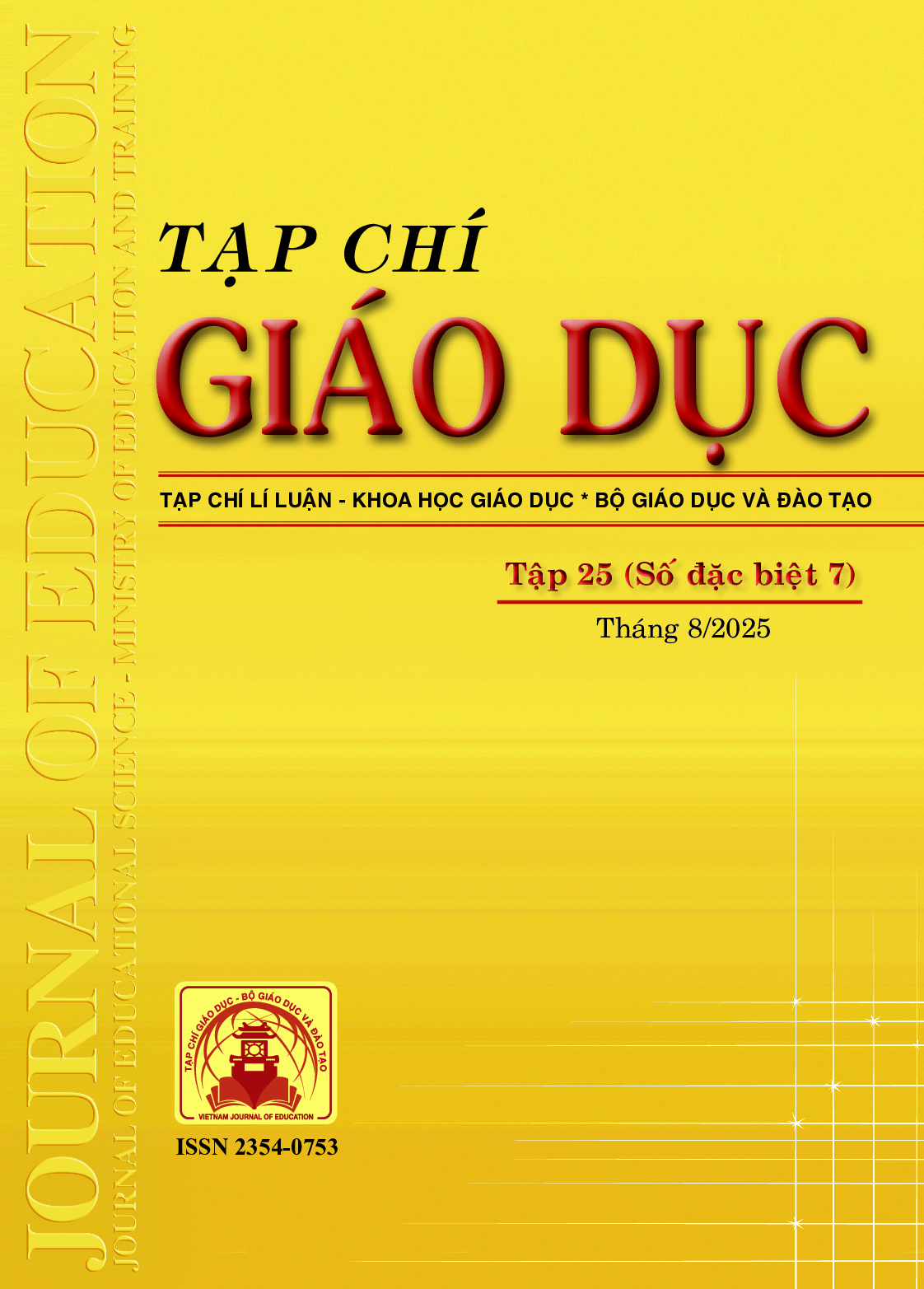Vận dụng “mô hình PICRAT” trong dạy học Lịch sử cấp trung học cơ sở theo quan điểm sư phạm tương tác
Tóm tắt
In the context of digital transformation strongly affecting education, including History teaching, the PICRAT model has become useful in helping teachers design effective technology-integrated teaching activities. Based on the analysis of the interactive pedagogical perspective, the PICRAT model and the History program at secondary school level, the article points out the levels of technology integration in history teaching towards developing subjectspecific competencies for students. From there, the article proposes the process of applying the PICRAT model to the design of teaching activities and illustrates it through the topic “Great geographical discoveries”. The article affirms the potential of integrating technology according to the PICRAT model into History teaching at secondary schools, not only contributing to innovation in teaching organization but also enhancing interaction, promoting self-study competency, critical thinking and creativity of students, thereby improving the quality of teaching the subject.
Tài liệu tham khảo
Bộ GD-ĐT (2018). Chương trình giáo dục phổ thông môn Lịch sử và Địa lí (Cấp Trung học cơ sở) (ban hành kèm theo Thông tư số 32/2018/TT-BGDĐT ngày 26/12/2018 của Bộ trưởng Bộ GD-ĐT).
Derry, J. (2013). Vygotsky: Philosophy and education. John Wiley & Sons.
Halyna, V. L. (2023). Adoption of the PICRAT model for technology integration in the preparation of future computer science teachers. Information Technologies and Learning Tools, 96(4), 152-168. [https://doi.org/10.33407/itlt.v96i4.5281](https://doi.org/10.33407/itlt.v96i4.5281).
Heberer Jr, D. H. (2021). Teacher perceptions & practice of technology integration before and after PICRAT matrix professional development intervention. St. John's University (New York).
Kimmons, R., Draper, D. E., & Backman, J. (2023). The PICRAT Technology Integration Model. [https://edtechbooks.s3.us-west-2.amazonaws.com/pdfs/371/5895.pdf](https://edtechbooks.s3.us-west-2.amazonaws.com/pdfs/371/5895.pdf)
Kimmons, R., Graham, C., & West, R. (2020). The PICRAT model for technology integration in teacher preparation. Contemporary Issues in Technology and Teacher Education, 20(1), 176-198.
Lê Thị Cẩm Tú, Lê Thị Phương Mai, Hà Thị Cát Châu, Phạm Thiết Trường (2024). Dạy học bài “Lực ma sát” (Vật lí 10) theo quan điểm sư phạm tương tác nhằm phát triển năng lực giải quyết vấn đề cho học sinh. Tạp chí Giáo dục, 24(13), 91-96.
Lê Thị Duyên (2016). Biện pháp vận dụng quan điểm sư phạm tương tác trong dạy học môn Giáo dục học tại Trường Đại học Sư phạm - Đại học Đà Nẵng. Tạp chí Khoa học và Công nghệ, Đại học Đà Nẵng, 2(99), 9-13.
Nguyễn Thị Bằng (2023). Nâng cao năng lực ứng dụng công nghệ thông tin trong dạy học trải nghiệm cho giảng viên và sinh viên Trường Đại học Thủ đô Hà Nội. Tạp chí Khoa học, Trường Đại học Thủ đô Hà Nội, 69, 63-73.
Nguyen, T. D. H. (2023). Using PICRAT Matric to evaluate the integration of technology in teaching English speaking skills. Equipment with New General Education Program, 1(288), 49-59.
Roy, M., & Denommé, J. M. (2009). Sư phạm tương tác - Một tiếp cận khoa học thần kinh về học và dạy (Trịnh Văn Minh và cộng sự dịch). NXB Đại học Quốc gia Hà Nội.
University of Michigan LSA Technology Services. (2020). PICRAT: A model for analyzing classroom technology integration. [https://lsa.umich.edu/technology-services/news-events/all-news/teaching-tip-of-the-week/picrat-amodel-for-analyzing-classroom-technology-integration.html](https://lsa.umich.edu/technology-services/news-events/all-news/teaching-tip-of-the-week/picrat-amodel-for-analyzing-classroom-technology-integration.html)
Vũ Lệ Hoa (2015). Tổ chức dạy học theo quan điểm sư phạm tương tác. NXB Giáo dục Việt Nam.
Wang, L. (2023). Adoption of the PICRAT model to guide the integration of innovative technologies in the teaching of a linguistics course. Sustainability, 15(5), 3886. [https://doi.org/10.3390/su15053886](https://doi.org/10.3390/su15053886)
Đã Xuất bản
Cách trích dẫn
Số
Chuyên mục
Giấy phép

Tác phẩm này được cấp phép theo Ghi nhận tác giả của Creative Commons Giấy phép quốc tế 4.0 .












